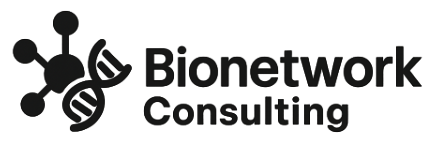
The journey of developing a new drug is long, expensive, and highly scrutinized. A pivotal step in this process is filing an Investigational New Drug (IND) application with the U.S. Food and Drug Administration (FDA). This submission allows clinical trials to begin, granting researchers the ability to test safety, dosing, and efficacy in humans. However, the approval of an IND is not guaranteed. Every piece of data, every validation protocol, and every compliance step is reviewed under the microscope of regulatory rigor.
This is where Quality Assurance (QA) plays a transformative role. More than just a checkpoint, QA has become the foundation of successful FDA IND submission. With the rise of digital platforms, cloud-based validation systems, and AI-driven data analysis, the landscape of regulatory submissions is evolving rapidly. For life sciences organizations, adopting these innovations means not only compliance but also competitive advantage.
The Critical Role of Quality Assurance in IND Submissions
At its core, Quality Assurance ensures that every process, document, and dataset included in an Investigational New Drug application meets FDA requirements. QA provides a structured approach to identifying errors before submission, ensuring data integrity, and validating systems used to generate clinical data.
Some key responsibilities of QA in the IND submission process include:
- Data Integrity: Confirming that preclinical and clinical trial data are accurate, traceable, and tamper-proof.
- GxP Compliance: Ensuring all systems follow Good Laboratory Practice (GLP), Good Clinical Practice (GCP), and Good Manufacturing Practice (GMP).
- Documentation Review: Auditing protocols, reports, and validation records for completeness and accuracy.
- Risk Mitigation: Identifying potential noncompliance issues before the FDA review.
In today’s competitive environment, QA is no longer a back-office function—it is a strategic enabler of faster and more reliable FDA IND submissions.
Latest Technologies Impacting IND Quality Assurance
1. Cloud-Based Validation Systems
Traditional IND submissions often involved paper-heavy processes that were error-prone and time-consuming. Now, cloud-based platforms allow real-time collaboration across global teams while maintaining strict 21 CFR Part 11 compliance. These systems provide audit trails, electronic signatures, and automated validation workflows—ensuring that every system supporting IND data is validated efficiently.
2. Artificial Intelligence and Machine Learning
AI-powered platforms are emerging as a game-changer in IND preparation. For instance, natural language processing (NLP) tools can scan thousands of pages of trial protocols or preclinical studies to identify inconsistencies, missing data points, or compliance gaps. Predictive analytics also helps organizations assess potential FDA concerns before submission, giving teams a chance to fix issues proactively.
3. Digital Twins in Preclinical Studies
A rising trend in drug development is the use of digital twins—virtual models of biological systems. By simulating how a drug interacts with the human body, researchers can reduce reliance on animal studies and generate more predictive data. Integrating digital twin data into IND submissions requires careful QA oversight to ensure models are validated and FDA-acceptable.
4. Blockchain for Data Integrity
Blockchain technology is gaining traction for maintaining immutable records of clinical trial data. By ensuring transparent and tamper-proof records, blockchain enhances trust in IND submissions, especially as regulatory agencies grow stricter about data fraud and manipulation.
5. Automation in Clinical Trial Management
From patient recruitment to monitoring, automation tools streamline many aspects of clinical trials. For IND submissions, automation ensures that essential trial data is collected, validated, and stored without gaps. Automated systems also flag protocol deviations early, reducing the risk of FDA queries.
Evolving FDA Expectations for IND Submissions
The FDA has been adapting its regulatory guidance to keep pace with technological advancements. For instance, the agency now encourages the use of electronic submissions through the Electronic Common Technical Document (eCTD) format. This shift emphasizes the need for robust QA processes that can ensure formatting, consistency, and data quality across complex submission packages.
Additionally, the FDA is showing increased interest in real-world evidence (RWE) and patient-centric trial designs. These bring new QA challenges: ensuring that patient-generated health data, wearables, and remote monitoring devices produce reliable, validated outputs that meet regulatory standards.
Challenges Companies Face in IND Quality Assurance
Despite advancements, many organizations still face hurdles in preparing IND submissions:
- Data Silos: Preclinical, clinical, and manufacturing data often reside in disconnected systems, creating inconsistencies.
- Resource Constraints: Smaller biotech startups may lack dedicated QA teams, relying instead on external consultants.
- Evolving Regulations: Keeping pace with FDA updates and global harmonization (e.g., ICH guidelines) can be overwhelming.
- Cost Pressures: Comprehensive QA programs add costs upfront, but inadequate QA can result in costly FDA rejections or delays.
Best Practices for IND Success Through QA
- Adopt Risk-Based QA Approaches: Focus validation and compliance resources on high-risk systems and processes.
- Leverage Technology Early: Use AI, automation, and cloud-based tools from the discovery stage onward to ensure seamless data integration.
- Engage QA Experts from Day One: Involve QA professionals in preclinical and clinical design phases rather than treating QA as a last-minute review.
- Maintain Robust Documentation: Every test, protocol, and decision should be clearly documented and easily retrievable for FDA inspection.
- Train Teams Continuously: QA is only as strong as the people behind it—ongoing training ensures that teams remain aligned with regulatory expectations.
The Future of IND Submissions: Faster, Smarter, Safer
The convergence of Quality Assurance, advanced technologies, and evolving FDA guidance is transforming how life sciences companies approach IND applications. By embedding QA into every step of drug development, organizations can not only achieve FDA clearance more reliably but also accelerate the path to clinical trials and, ultimately, patient care.
As Investigational New Drug submissions become increasingly data-driven, the role of QA will expand beyond compliance into one of strategic innovation. Those who embrace digital transformation and proactive QA strategies will be best positioned to bring therapies to market faster—without compromising safety or integrity.
Conclusion
Bringing a new therapy to market is one of the most challenging journeys in science and medicine. The FDA IND submission is a critical gateway in this process, and Quality Assurance serves as its cornerstone. With new technologies like AI, blockchain, digital twins, and cloud-based systems reshaping the regulatory landscape, companies must adapt to stay competitive.
In the end, success is not just about filing an application—it’s about building a robust, validated, and compliant foundation that inspires confidence in regulators and protects patients. By investing in modern QA practices, life sciences organizations can ensure that their Investigational New Drug applications don’t just pass FDA scrutiny, but also set the stage for transformative medical breakthroughs.
